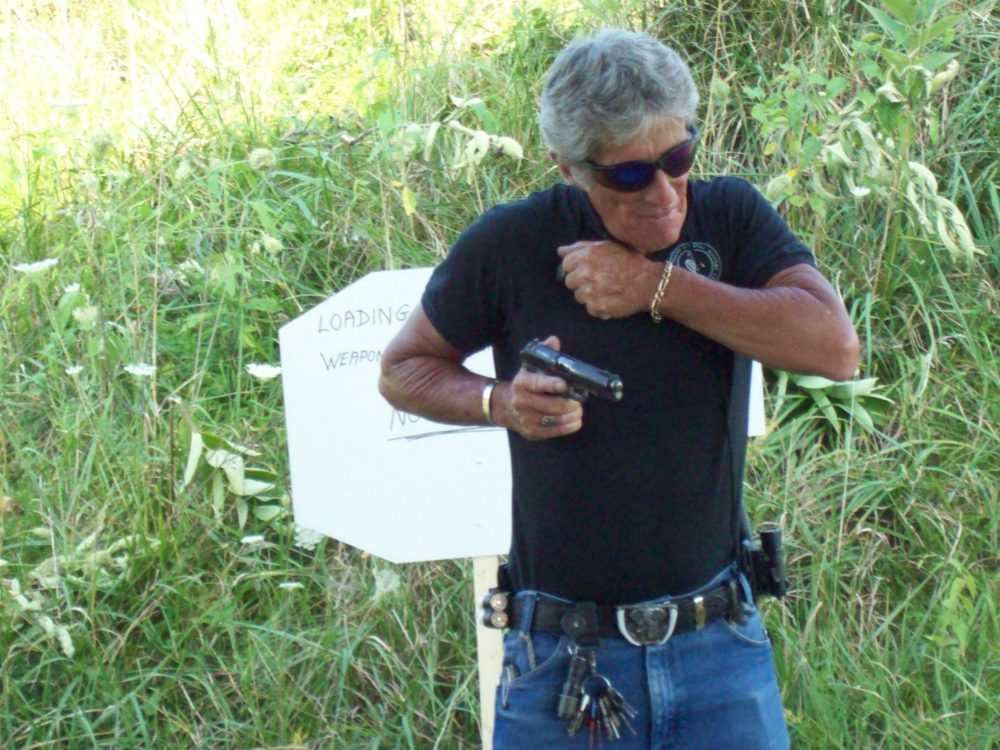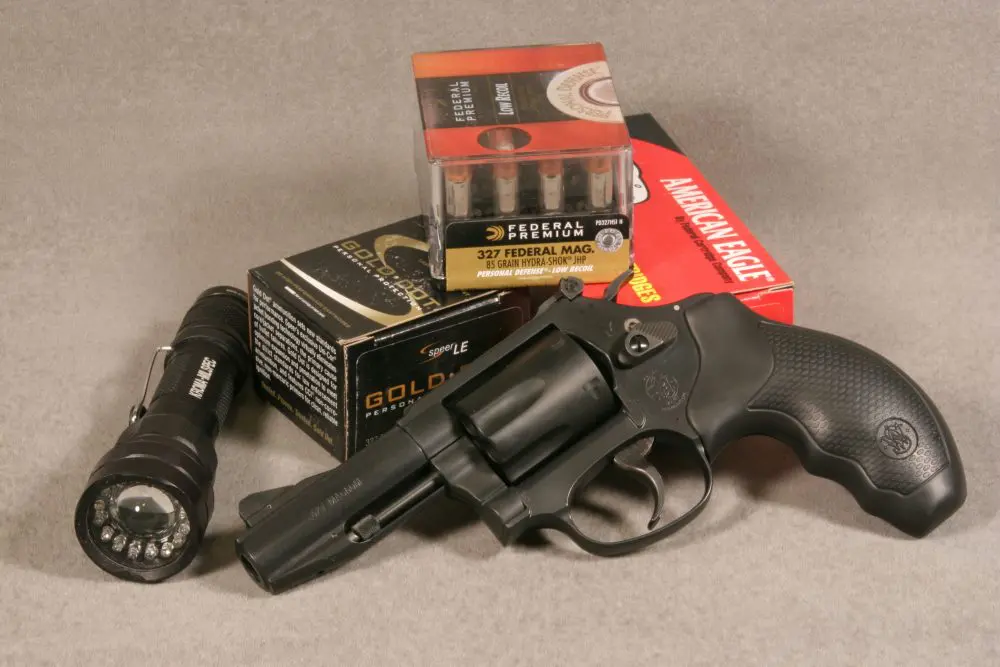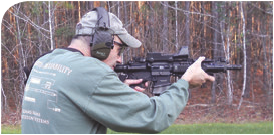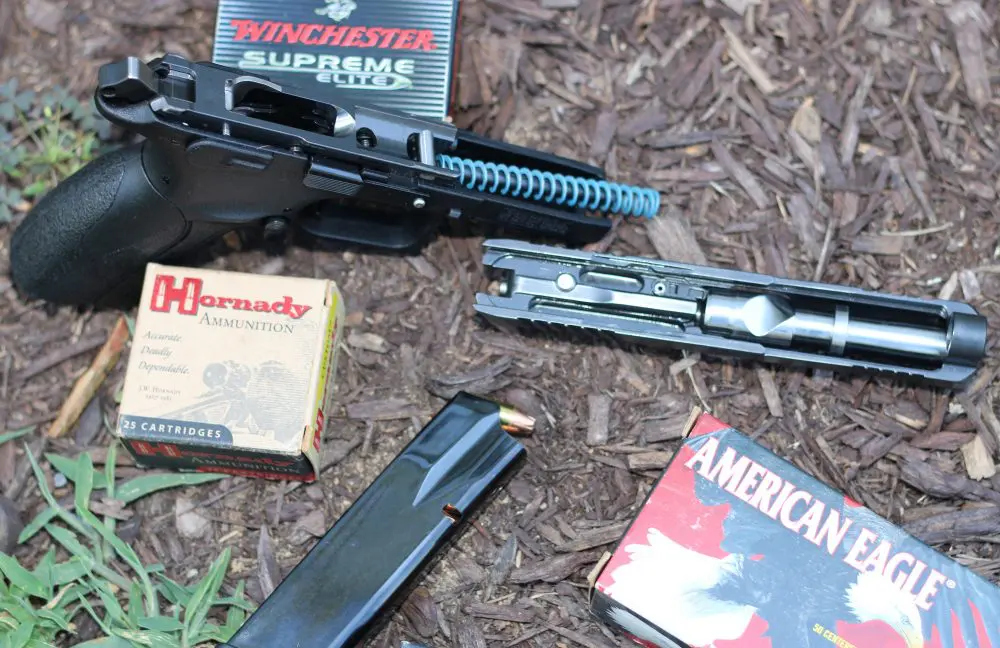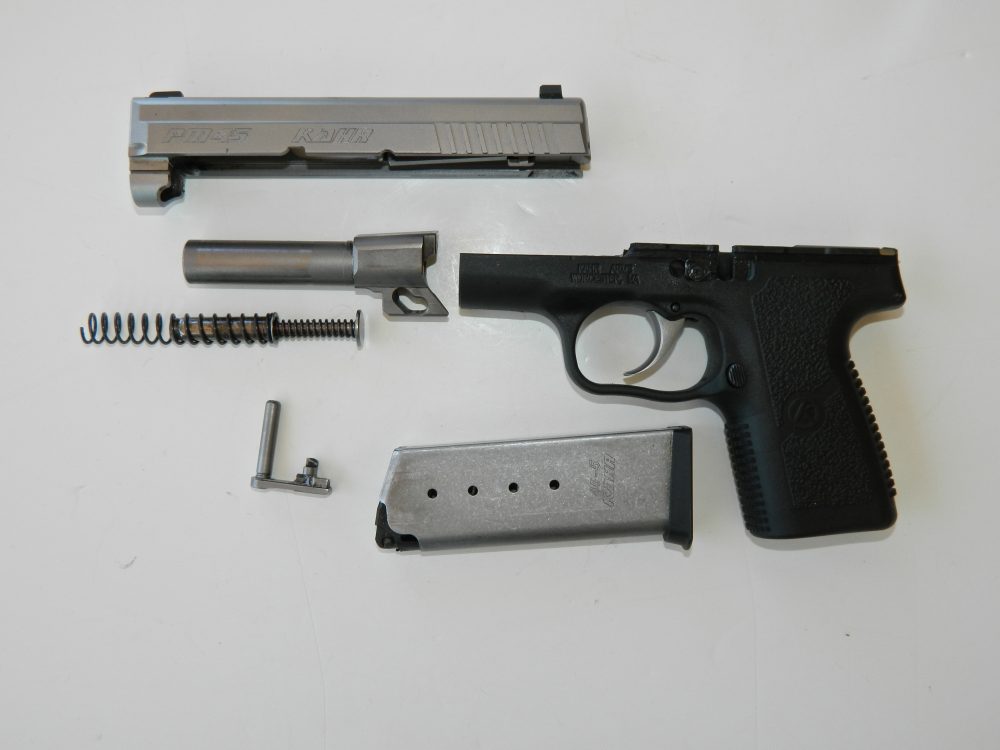Trophy Bonded 10mm Auto shows the cartridge’s potential. The bullet used with the Federal load is based on the proven Trophy Bonded Bear Claw rifle round featuring a jacket with formed inner profile that controls expansion to ensure deep penetration. The load features a 180-grain bullet that leaves the muzzle at 1,275 feet-per-second (fps) compared to the usual 1,030 fps of many manufacturer offerings.
This load delivers 650 foot-pounds of energy, which puts it roughly between the .357 Magnum and .41 Magnum. This kind of power offers great flexibility for the user in terms of use in personal defense or hunting medium-size game.
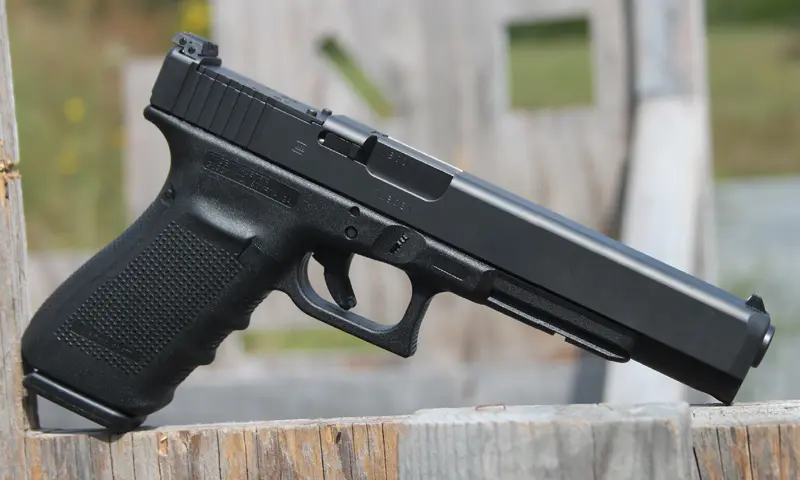
Buffalo Bore is another prime source of true 10mm Auto ammunition, offering several bullet types ranging from hard cast to JHC and FMJ-FN. Buffalo Bore hard-cast bullets are not verboten with the Glock polygonal rifling. This goes against typical warnings related to lead bullets and is because of the differences between soft lead “cowboy” bullets and hard-cast bullets. True hard-cast bullets (as opposed to lead swaged bullets) that are properly lubed will not lead foul polygonal barrels any more than any other type of rifled barrel. Hard-cast bullets are not “lead” bullets as most associate with the term. Buffalo Bore hard-cast loads are an excellent option for anyone contemplating using the 10mm Auto for hunting.
Premium 10mm Auto loads from Hornady were used, consisting of 155-grain XTP and 175-grain FlexLock Critical Duty. These Hornady loads were designed with personal defense in mind, with XTP and Critical Defense bullets loaded at 1,150 to 1,250 fps. The Critical Duty’s FlexLock bullets have a heavy jacket and a harder high-antimony core designed to defeat barriers. The jackets are locked to the core via the same InterLock process the company uses on its centerfire rifle bullets.
Hornady has also taken full advantage of recent advances in propellant technology, using low muzzle flash powder in Critical Duty ammunition. The Hornady Critical Duty FlexLock bullet balances barrier penetration with proper expansion in the target for maximum effectiveness. Hornady Critical Duty passed all five of the FBI’s barrier criteria tests, giving 12 inches plus of penetration no matter if through glass, sheet metal, heavy clothing, drywall, or plywood, while still expanding for maximum wound channel as well as not passing through the ballistic gel test medium.
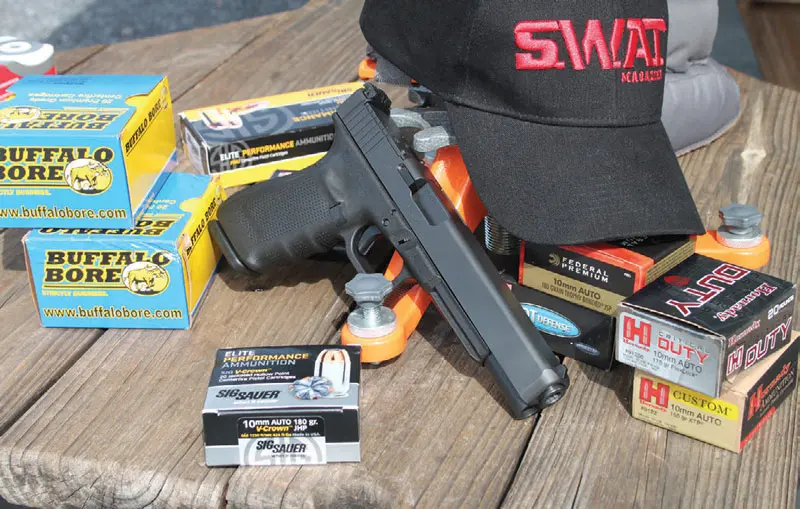
The FlexLock bullet nose prevents the hollow-point from deforming or clogging when passing through barriers. The ogives of the Critical Duty bullets do not taper as much as other hollow-point bullets, which improves feeding characteristics in autoloaders.
The nickel-plated cases are another attention to detail nod that limits drag into or out of a weapon’s chamber, limiting chances for failure to feed or extract. Critical Duty, as the name implies, was designed with law enforcement in mind, though security-conscious citizens would be amiss not to at least consider it.
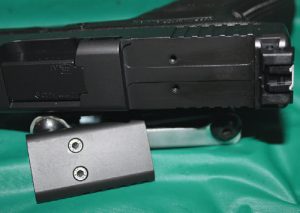
Table of Contents
LONG SLIDE
The G40 MOS is a true “long slide,” reminding one of 17L 9mm dimensions. A length of 9.5 inches provides an extended 8.2-inch sight radius. Width is 1.27 inches and weight empty is 28 ounces. Three 15-round magazines arrived with the G40 MOS. The 6.02-inch barrel gets the most out of the 10mm Auto in terms of velocity. Velocity gain between a 3.7- inch Glock 29, used for comparison, and the six-inch G40 MOS was in the 100 to 120 fps range.
Buffalo Bore 180-grain JHP clocked in at 1,320 fps from the G29 and 1,445 fps from the longer-barreled G40 MOS. Hornady 155-grain XTP chronoed 1,242 fps from the G29, 1,309 fps with the G20, and 1,406 fps out of the G40 MOS.
RANGE TESTING
Range testing took place at Echo Valley Training Center (EVTC).
Federal Vital-Shok 180-grain Trophy Bonded 10mm Auto and Buffalo Bore were the stoutest loads, but in no way harsh or unmanageable. The Glock polymer frame and overall size of the G40 MOS absorbed and mitigated felt recoil.
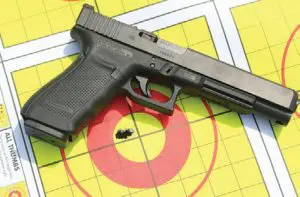
EVTC TacStrike steel targets were rocked with a more substantial smack than a typical handgun round. While I was definitely aware I wasn’t firing a 10mm, recoil was not prohibitive, with accurate rapid shots possible. The word “smooth” best describes the G40 MOS while firing.
All 10mm Auto loads tested had no issue penetrating windshields or car body sheet metal. This is the type of performance and barrier penetration capability the 10mm Auto was designed for. Further range testing consisted of dumping multiple magazines at several targets in rapid fashion.
Testing focused on two main T&E priorities: verify the G40 MOS and RMR’s reliability and ascertain what advantage the red dot offers over iron sights.
One concern was being able to find the Trijicon RMR dot just as quickly as what is expected with the traditional iron sight front post. Though not found on the Glock factory G40 MOS, extended height suppressor sights are handy for the initial transition over to red dots on a handgun. Many researched sources advocate suppressor-style rear iron sights behind the RMR that act as backup sights and quickly orient the shooter’s eye to the RMR dot stationed above the extended front post.
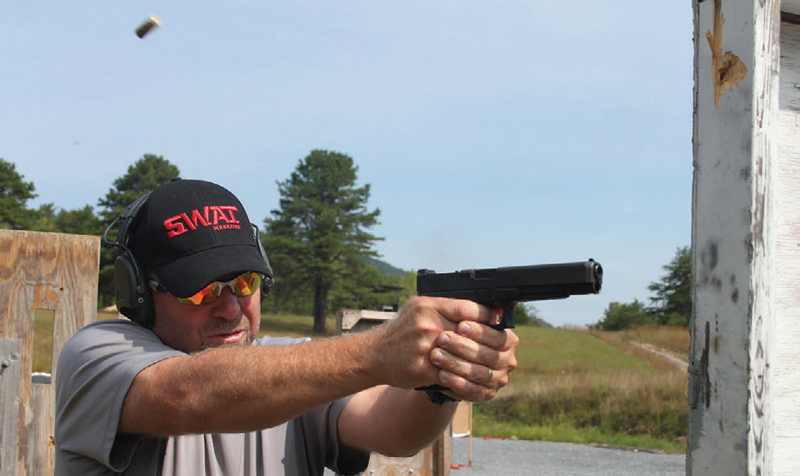
This uses the existing skill sets of acquiring sights by placing the dot visually on top of the front sight, requiring zero learning curve and matching the sight system most already have on their M4 or AK set up with co-witnessed sights.
HITS ON TARGET
Hitting steel at 100 yards on the first shot proved no problem with the flat-shooting 10mm Auto G40 MOS. This was further reinforced by running CQB drills at times equal or superior to iron sights. The Trijicon RMR red dot sight assisted in engaging targets at close distances, with the red dot easy to pick up after a few training sessions.
The RMR red dot sight offered the capability to engage multiple targets in rapid sequence compared to open sights. At the same time it provided adequate accuracy out to at least 100 yards due to the red dot superimposing an aim point on the target while not totally obscuring the target because of the dot not being that large. As many “maturing” shooters can attest, the single focus plane with the red dot is easier to shoot accurately than coordinating front and rear sights.
The Trijicon RMR sight withstood the recoil and heat generated by repeated long strings of fire. The RMR only weighs several ounces, which aids its ability to withstand the inertial forces experienced as the slide operates.
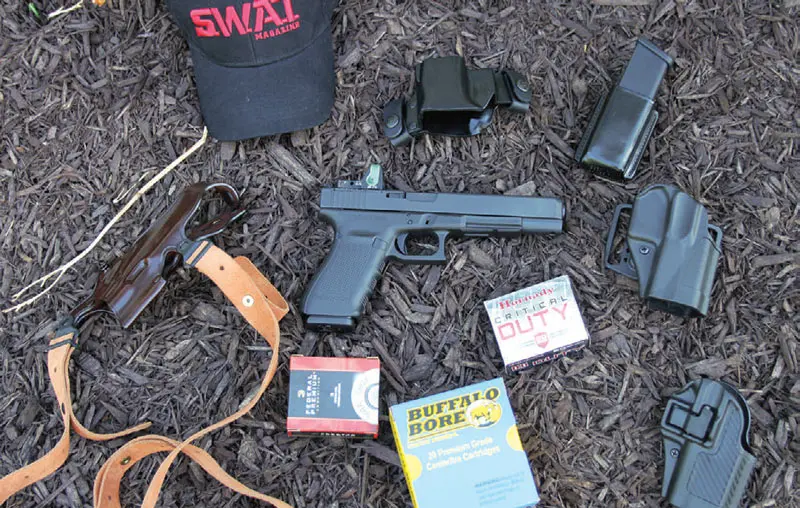
Other drills consisted of various scenarios engaging targets from behind cover or on the move. Magazine change drills were done for the dual purposes of getting a feel for manipulating the Glock with the Trijicon RMR installed and making sure the red dot was seamlessly picked up after the pistol was reloaded and again engaging targets.
Overall, the Glock G40 MOS does seem to be a valid tool offering real-world applications. The RMR-equipped 10mm Auto G40 MOS extends the effective range of the handgun beyond what most are capable of with iron sights.
As with most things involving weapons, especially ones that are pushing the envelope past “safe” norms, individual bias and needs will determine if the 10mm Auto G40 MOS is worthy of consideration.
